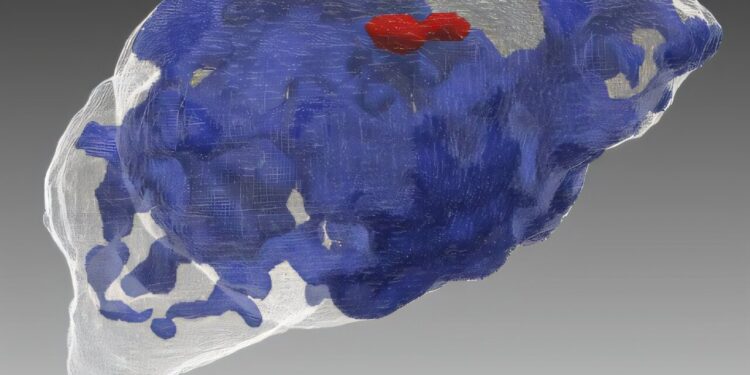3D model of the neonatal brain showing regions of reduced growth (blue) and increased growth in the ventricles (red). Credit: Lani Cupo
Researchers at the Douglas Research Center at McGill University have discovered that excessive cannabis use during pregnancy can lead to delays in fetal brain development that persist into adulthood.
Using advanced MRI techniques, the team tracked the effects of prenatal cannabis exposure in mice through key developmental stages.
While public health agencies warn against cannabis use during pregnancy, most of the supporting evidence from humans is observational. The findings add biological evidence showing how heavy consumption can disrupt brain growth from early development through adulthood.
Published in Molecular PsychiatryThe preclinical study also reflects the higher potency of cannabis available today, helping to fill a gap in understanding its potential risks.
“As the legalization of cannabis is relatively recent, we do not yet have long-term human data on new THC products,” said lead author Mallar Chakravarty, a full professor in the Department of Psychiatry and a researcher at Douglas. “Our results offer a first glimpse of possible outcomes in a decade or two.”
Experimental timelines. Credit: Molecular Psychiatry (2025). DOI: 10.1038/s41380-025-03189-5
Track brain development over time
The average THC potency in dried cannabis has increased from about 3% in the 1980s to about 15% in 2022, with some varieties reaching 30%, according to Health Canada.
To model intensive consumption, the researchers simulated daily exposure equivalent to one or two joints containing more than 10% THC during a stage comparable to the first trimester of human pregnancy.
They observed developmental changes across three life stages:
- Late pregnancy: Embryos exposed to THC had smaller bodies and larger brain ventricles, signaling abnormal brain development.
- Early life: Newborns gained weight more quickly, but their brains developed more slowly, suggesting a mismatch or delay.
- From adolescence to adulthood: Smaller brain volumes persisted, particularly in women, who also exhibited more anxious behaviors.
“The good news is that many of these developmental delays are subtle and could probably be compensated for by a supportive environment,” Chakravarty said.
A rare look at the entire lifespan
The methods used provided a level of detail rarely achieved in preclinical studies, the researchers explain.
“Part of it is that this type of research is extremely resource intensive,” said first author Lani Cupo, who conducted this work for six years during her doctorate. at McGill. “We used live brain imaging to track development throughout life, which is not common in mice.”
Collaborators at the University of Victoria then used ultra-high resolution microscopy to examine how brain cells changed after exposure to THC.
Mallar Chakravarty (left) and Lani Cupo review brain imaging scans at the Douglas Research Center. Credit: Yuhan Liu
Support informed choices
Researchers note that some people use cannabis before realizing they are pregnant, while others use it to manage nausea or to cope with anxiety and depression, conditions that can also affect pregnancy outcomes.
“There is no ‘ideal’ pregnancy,” Chakravarty said. “It’s not about what’s good or bad, it’s about giving people the information they need to make informed decisions.”
A follow-up study will explore whether other forms of cannabis, such as edibles, vaping, and CBD products, affect the brain differently.
More information:
Lani Cupo et al, Impact of prenatal exposure to delta-9-tetrahydrocannabinol on mouse brain development: a magnetic resonance imaging study from fetus to adulthood, Molecular Psychiatry (2025). DOI: 10.1038/s41380-025-03189-5
Provided by McGill University
Quote: Heavy cannabis use during pregnancy linked to disrupted brain growth (November 18, 2025) retrieved November 18, 2025 from
This document is subject to copyright. Except for fair use for private study or research purposes, no part may be reproduced without written permission. The content is provided for informational purposes only.



